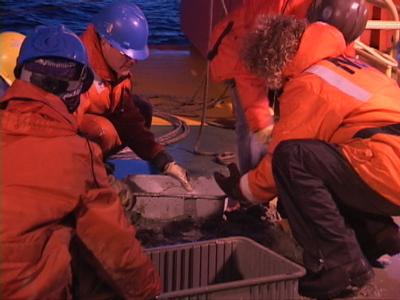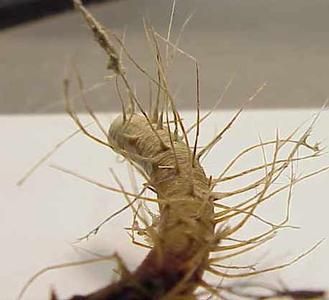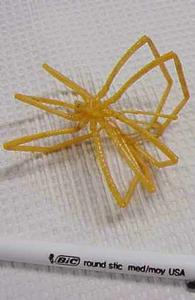
|
|
17 February, 2001
Back on station
One of the few things we could do when the weather was bad was take a rock
dredge and drag it across the ocean floor to collect rocks. Not only rocks
came aboard, but also many aquatic critters! Rob Beaman, one of our
Australian scientists, collected all of the critters, even using sieves to
separate out the increasingly smaller ones. It was so interesting to see
the types of animals that live on the ocean floor. There were coral and
bryozoa (what are bryozoa? They looks like a plant or seaweed, but are
not). I was most surprised by some of the sponges we collected - they are
made out of fibers that look just like fiberglass. This fiberglass
substance is made out of silica (what's another mane for silica?*). In
Antarctica, silica "rules" due to the lack of calcium carbonate in the
water column. Sometimes there are so many sponge skeletons on the sea
floor that they forms large" mats". Tubeworms were another interesting
critter in the dredge. (Find the picture that looks like a root. Do you
know what it is? Where might it live, and why the root-like structures
around the outside?) * And just when you thought there was a place on earth
without spiders, we found one: a sea spider. (Why did we use a pen in the
picture?) Sea spiders are actually more closely related to crabs. They
have a huge proboscis (nose) with sucking mouthparts and a tiny abdomen.
They feed by inserting their proboscis into sea anemones or bryozoans, and
then sucking out the fluids. Once we laid out and grouped the specimens,
Rob photographed and weighed them. In the last photo, I am searching for
information to describe the critters that we have collected, and writing
their scientific name on the specimen bottles. Why would we want to write
the scientific name as well as the common name?
*glass
* they live in the mud and need the "roots" to anchor themselves into the
sediment







Contact the TEA in the field at
.
If you cannot connect through your browser, copy the
TEA's e-mail address in the "To:" line of
your favorite e-mail package.
|
